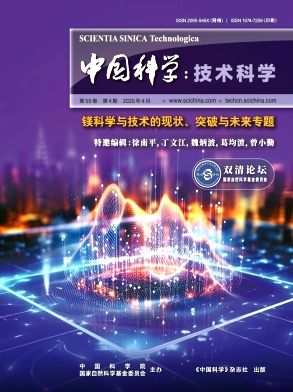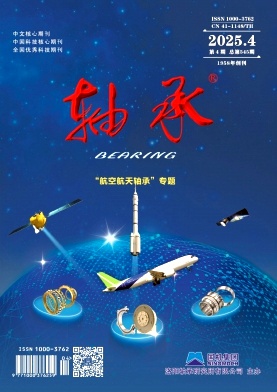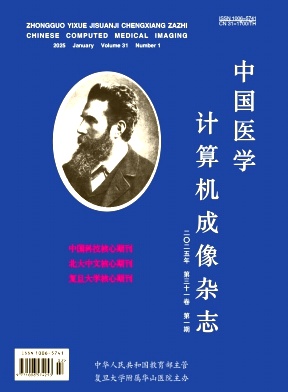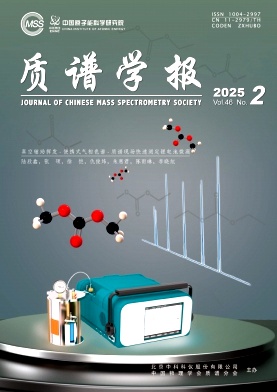中國科學(xué):技術(shù)科學(xué)投稿格式要求
Title
Titles must be limited to no more than 20 words, and should be concise, indexable, and informative for a broad scientific audience. Authors should avoid using colons, questions, nonstandard abbreviations, etc., in titles.
Author(s) and Author affiliation
Author(s) : Authorship should be limited to those who have contributed substantially to the work.
The order of the authors listed should be agreed by all the coauthors, and every author should have the responsibility for the published content. The corresponding author must have obtained permission from all authors for the submission of each version of the paper and for any change in authorship.
Family names are written in upper case. The email address of the corresponding author is required.
Author affiliation : The affiliation should be the institution where the work was done. Complete addresses are required with post codes.
Abstract
An abstract is a summary of the content of the manuscript. It should briefly describe the research purpose, method, result and conclusion. The extremely professional terms, special signals, figures, tables, chemical structural formula, and equations should be avoided here, and citation of references is not allowed.
Keywords : A list of three to eight keywords should follow the abstract. The chosen keywords are required to reflect the theme of a manuscript.
Text
A paper should begin with a brief introduction of the significance of the author's research. Nomenclature, signal, and abbreviation should be defined at their initial appearance. All the figures and tables should be numbered in numerical order.
Introduction : Being the most important part of an article, the introduction introduces the relevant research background and the progress in 2 or 3 years, with references cited in numerical order, then presents the problem to be solved in this article, and finally briefly describes the method adopted in this work. Before the end, the aim of the research should be mentioned. Subtitle is forbidden in this part, and introduction of the article structure is considered unnecessary.
Materials and method : This part introduces the materials, method and experimental procedure of the author's work, so as to allow others to repeat the work published based on this clear description.
Discussion and conclusions : Conclusions should be derived from the observation and experimental results, and comparison with other relevant results is considered helpful to further proving the results. Repeated data should be avoided, and conclusions and suggestions are required to be clearly expressed. New hypotheses and recommendations may be proposed when warranted.
Figures and tables : Figures and tables should be numerically numbered, inserted in the text, and cited in order within the text. The figures should have resolution not lower than 600 dpi and clear lines of 5 px, with signals and letters in Times New Roman at 8 pt. A space should always be maintained between the variable and the unit.
Equations : An equation is numerically numbered (Arabic numeral), and has the number put on its right side.
Acknowledgements : The author expresses his/her thanks to the people helping with this work, and acknowledges the valuable suggestions from the peer reviewers.
Financial support : Financial support appears on the bottom of the title page, with grant number(s) following. The full title of each fund is required. For example: National Natural Science Foundation of China; National High-Tech Research & Development Program of China; National Basic Research Program of China.
References
References : Reference citation is regarded as an important indicator of the paper quality. If the relevant references, especially the results published in 2 to 3 years are not cited in the paper, or most citations are from the author's publications, the editor will consider this paper unattractive. References should be numerically numbered and cited in order within the text, with the numbers expressed in square brackets. The author should carefully check the author names, article title, journal title, year, volume and issue number of references, and create the listing according to the format of Sci China Tech Sci .
Reference format
1. For an author's name, full spelling of family name appears before abbreviation of given name, with a spacing in the middle.
2. If there are more than 3 authors, the first 3 names are followed by et al.
3. The article title should be identified by an initial capital letter with the remainder of the title in lower case.
4. For correct abbreviations of journal titles, refer to ISO, eg, Chin Sci Bull for Chinese Science Bulletin , Sci China Life Sci for Science China Life Sciences.
5. For books and proceedings, the initial letter is capitalized for all the notional words and for function words with more than 4 letters.
6. Do not forget to list the editor names of the proceedings, the publisher, the publishing address, and the beginning and terminating pages.
7. Accepted but unpublished papers should be followed by “in press”.
8. Websites or homepages cannot be cited as references.
Reference examples
References : Reference citation is regarded as an important indicator of the paper quality. If the relevant references, especially the results published in 2 to 3 years are not cited in the paper, or most citations are from the author's publications, the editor will consider this paper unattractive. References should be numerically numbered and cited in order within the text, with the numbers expressed in square brackets.
Reference examples are given as follows:
●Journal
Wang QH, Lindon O, Hardle W. Semiparametric regression analysis with missing response at random. J Amer Statist Assoc, 2004, 99: 334--345
●Monograph
Rordam M, Larsen F, Lausten N. An introduction to K-theory for C*-algebras. Cambridge: Cambridge Univ Press, 2000. 30—35
●Proceedings
Qin H R. The subgroups of a finite order in K(Q). In :Bass H, Kuku AO, Pedrini C, eds. Algebraic K-theory and Its Application. Singapore: World Scientific, 1999. 600—607
●Conference proceedings
Minor H E. Spillways for high velocities. In: Zurich VE, Minor HE, Hager WH, eds. Proceedings of International Workshop on Hydraulics of Stepped Spillways, Rotterdam, the Netherlands, 2000. 3--10
●Dissertation
Liu G X. Classification of finite dimensional basic Hopf algebras and related topics. Dissertation for the Doctoral Degree. Hangzhou: Hangzhou University, 2005. 24--28
●Technical report
Phillips N A. The Nested Grid Model. NOAA Technical Report NWS22. 1979
●Patent
Zhang W P. Experiment Apparatus of Diffraction Imaging. China Patent, 02290557.X, 2003-12-03
●User manual
Wang DL, Zhu J, Li ZK, et al. User Manual for QTKMapper Version 1.6, 1999
●Software
Hemodynamics III: The ups and downs of hemodynamics. Version 2.2. Orlando (FL): Computerized Educational Systems. 1993
●CD
Anderson SC, Poulsen K B. Anderson's Electronic Atlas of Hematology. Philadelphia: Lippincott Wilkins, 2002
●Electronic version of a journal
Christine M. Plant physiology: plant biology in the Genome Era [OL]. Science, 2003, 281: 331 -332 [2003-09-23]. http://www.sciencemag.org/anatmorp.htm
Conflict of Interest
Disclosure of potential conflict of interests
Authors must disclose all relationships or interests that could influence or bias the work. Although an author may not feel there are conflicts, disclosure of relationships and interests affords a more transparent process, leading to an accurate and objective assessment of the work. Awareness of real or perceived conflicts of interests is a perspective to which the readers are entitled and is not meant to imply that a financial relationship with an organization that sponsored the research or compensation for consultancy work is inappropriate. Examples of potential conflicts of interests that are directly or indirectly related to the research may include but are not limited to the following:
· Research grants from funding agencies (please give the research funder and the grant number)
· Honoraria for speaking at symposia
· Financial support for attending symposia
· Financial support for educational programs
· Employment or consultation
· Support from a project sponsor
· Position on advisory board or board of directors or other type of management relationships
· Multiple affiliations
· Financial relationships, for example equity ownership or investment interest
· Intellectual property rights (eg patents, copyrights and royalties from such rights)
· Holdings of spouse and/or children that may have financial interest in the work
In addition, interests that go beyond financial interests and compensation (non-financial interests) that may be important to readers should be disclosed. These may include but are not limited to personal relationships or competing interests directly or indirectly tied to this research, or professional interests or personal beliefs that may influence your research.
The corresponding author will include a summary statement in the text of the manuscript in a separate section before the reference list.
See below examples of disclosures:
Funding
This study was funded by X (grant number X).
Conflict of Interest
Author A has received research grants from Company A. Author B has received a speaker honorarium from Company X and owns stock
Figures
File Format: Please provide separate files in formats such as PNG, JPG/JPEG, TIFF, etc. (with a resolution of 500-600 dpi or higher). Vector graphics and formats such as PDF, PPT, etc. are not accepted. Images should not be inserted into Word documents, as this will significantly reduce clarity.
Plate Size: Single column width should be 8 cm, full column width should be 17 cm, and the height should be less than 20 cm. Try to avoid using light-colored pens for text and lines, such as yellow and light blue.
Each figure number should correspond to one graphic file. Unassembled separate figure files are not accepted. Sub-figure numbers like “abcd” must be written according to the journal's style requirements.
For font size, capitalization, italics, numeric values, units, etc., please refer to the format of articles already published in this journal and make the necessary modifications.
中國科學(xué):技術(shù)科學(xué)編輯部地址
編輯部地址是北京東黃城根北街16號。
中國科學(xué):技術(shù)科學(xué)創(chuàng)刊時間
創(chuàng)刊時間是:1950。
中國科學(xué):技術(shù)科學(xué)郵發(fā)號
郵發(fā)號:82-208。
中國科學(xué):技術(shù)科學(xué)編委會成員
編委會成員:
馬宗義機構(gòu):
中國科學(xué)院金屬研究所
研究領(lǐng)域:
金屬復(fù)合材料
王 剛機構(gòu):
上海大學(xué)
研究領(lǐng)域:
非晶合金
王樹聲機構(gòu):
西安建筑科技大學(xué)
研究領(lǐng)域:
城市規(guī)劃
王晉軍機構(gòu):
北京航空航天大學(xué)
研究領(lǐng)域:
流體力學(xué)
田永君機構(gòu):
燕山大學(xué)
研究領(lǐng)域:
超硬材料
馮 雪機構(gòu):
清華大學(xué)
研究領(lǐng)域:
固體力學(xué)
寧建國機構(gòu):
北京理工大學(xué)
研究領(lǐng)域:
工程力學(xué)
呂金虎機構(gòu):
北京航空航天大學(xué)
研究領(lǐng)域:
系統(tǒng)控制
呂海寶機構(gòu):
哈爾濱工業(yè)大學(xué)
研究領(lǐng)域:
特種環(huán)境復(fù)合材料
劉文廣機構(gòu):
天津大學(xué)
研究領(lǐng)域:
生物醫(yī)用高分子材料
劉漢龍機構(gòu):
重慶大學(xué)
研究領(lǐng)域:
土木工程
劉昌勝機構(gòu):
上海大學(xué)
研究領(lǐng)域:
生物材料
劉金國機構(gòu):
中國科學(xué)院沈陽自動化研究所
研究領(lǐng)域:
機器人與自動化裝備
劉 靜機構(gòu):
清華大學(xué)
研究領(lǐng)域:
傳熱學(xué)、生物醫(yī)學(xué)熱物理
李應(yīng)紅機構(gòu):
空軍工程大學(xué)
研究領(lǐng)域:
航空宇航推進技術(shù)
李宏男機構(gòu):
大連理工大學(xué)
研究領(lǐng)域:
土木工程
李 強機構(gòu):
南京理工大學(xué)
研究領(lǐng)域:
工程熱物理與能源利用
吳宜燦機構(gòu):
中子科學(xué)國際研究院
研究領(lǐng)域:
核科學(xué)與技術(shù)
冷勁松機構(gòu):
哈爾濱工業(yè)大學(xué)
研究領(lǐng)域:
智能材料和復(fù)合材料力學(xué)
宋曉艷機構(gòu):
北京工業(yè)大學(xué)
研究領(lǐng)域:
材料科學(xué),計算材料學(xué)
張?zhí)镏覚C構(gòu):
上海大學(xué)
研究領(lǐng)域:
材料力學(xué)/固體力學(xué)
陳云敏機構(gòu):
浙江大學(xué)
研究領(lǐng)域:
巖石工程
陳 光機構(gòu):
南京理工大學(xué)
研究領(lǐng)域:
金屬材料與加工
陳涌海機構(gòu):
中國科學(xué)院半導(dǎo)體研究所
研究領(lǐng)域:
半導(dǎo)體材料
周又和機構(gòu):
蘭州大學(xué)
研究領(lǐng)域:
多場耦合非線性力學(xué)
周順桂機構(gòu):
福建農(nóng)林大學(xué)
研究領(lǐng)域:
有機固體廢物資源利用
寶音賀西機構(gòu):
清華大學(xué)
研究領(lǐng)域:
航天器動力學(xué)與控制
宗秋剛機構(gòu):
北京大學(xué)
研究領(lǐng)域:
空間科學(xué)
趙天壽機構(gòu):
南方科技大學(xué)
研究領(lǐng)域:
工程熱物理與能源科學(xué)
趙啟斌機構(gòu):
RIKEN, Japan
研究領(lǐng)域:
Machine learning, Tensor Learning Theory and Application
柯燎亮機構(gòu):
天津大學(xué)
研究領(lǐng)域:
薄膜力學(xué)
段海濱機構(gòu):
北京航空航天大學(xué)
研究領(lǐng)域:
導(dǎo)航、制導(dǎo)與控制
姜培學(xué)機構(gòu):
清華大學(xué)
研究領(lǐng)域:
工程熱物理
姜 潮機構(gòu):
湖南大學(xué)
研究領(lǐng)域:
汽車工程
姜 瀾機構(gòu):
北京理工大學(xué)
研究領(lǐng)域:
機械工程,激光微納制造
郭萬林機構(gòu):
南京航空航天大學(xué)
研究領(lǐng)域:
飛行器結(jié)構(gòu)安全與智能化
郭 旭機構(gòu):
大連理工大學(xué)
研究領(lǐng)域:
計算力學(xué)、納米力學(xué)
席 光機構(gòu):
西安交通大學(xué)
研究領(lǐng)域:
動力工程與工程熱物理
陶 智機構(gòu):
北京航空航天大學(xué)
研究領(lǐng)域:
航空發(fā)動機
黃永安機構(gòu):
華中科技大學(xué)
研究領(lǐng)域:
柔性電子器件與應(yīng)用
黃曉旭機構(gòu):
重慶大學(xué)
研究領(lǐng)域:
金屬材料
曹晉濱機構(gòu):
北京航空航天大學(xué)
研究領(lǐng)域:
空間環(huán)境探測技術(shù)
梁新剛機構(gòu):
清華大學(xué)
研究領(lǐng)域:
動力工程及工程熱物理
彭練矛機構(gòu):
北京大學(xué)
研究領(lǐng)域:
碳基電子學(xué)
舒 昌機構(gòu):
National University of Singapore, Singapore
研究領(lǐng)域:
流體力學(xué)
童美萍機構(gòu):
北京大學(xué)
研究領(lǐng)域:
水沙物質(zhì)通量分析
翟婉明機構(gòu):
西南交通大學(xué)
研究領(lǐng)域:
鐵路工程
潘 兵機構(gòu):
北京航空航天大學(xué)
研究領(lǐng)域:
固體力學(xué)、光測力學(xué)
薛冬峰機構(gòu):
中國科學(xué)院深圳先進技術(shù)研究院
研究領(lǐng)域:
無機化學(xué)
魏悅廣機構(gòu):
北京大學(xué)
研究領(lǐng)域:
力學(xué)





